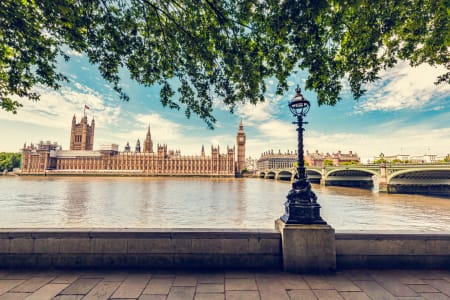
Jeremy Hunt’s Spring Budget, delivered on 15 March, announced some of the biggest changes to pensions since 2014 and brought relief to households struggling with childcare bills.
Budget 2023 at a glance: Key pension changes
- Pension Lifetime Allowance abolished
- Annual pension allowance increased from £40,000 to £60,000
- Minimum Tapered Annual Allowance increased from £4,000 to £10,000
- Money Purchase Annual Allowance (MPAA) raised from £4,000 to £10,000
- Free childcare for all children over nine months old by September 2025.
Below we cover what this means for your pensions and savings.
Pension Lifetime Allowance abolished
The Chancellor’s ‘rabbit out of the hat’ moment was the announcement that the pension Lifetime Allowance is to be abolished entirely. Currently you can pay a total of £1,073,100 into pensions before facing a hefty tax charge of up to 55% on withdrawals for amounts above the cap.
Ahead of the Budget, it was rumoured that the Lifetime Allowance would be increased to £1,800,000. But Jeremy Hunt went a step further today announcing that the cap’s to be removed completely from April 2023.
The Lifetime Allowance meant many people nearing the cap were retiring early due to the large tax bill they faced if they continued to work. It was causing particular problems in the NHS, with increasing numbers of senior doctors retiring early rather than face going over the cap.
“The abolition of the Lifetime Allowance (LTA) is a huge and unexpected move. Removing it could benefit many younger workers who are diligently saving into their pensions, as well as older pension savers close to the cap,” says Becky O’Connor, Director (VP) Public Affairs at PensionBee.
You can take up to 25% of your pension as a tax-free lump sum. However the government isn’t allowing limitless tax-free cash even after the Lifetime Allowance has been abolished. Instead, the maximum that can be taken as tax-free cash will remain at £268,275 (25% of the current Lifetime Allowance).
Annual Allowance increased
The Annual Allowance is the amount you can pay into a pension each year while benefiting from tax relief. It’ll rise from £40,000 to £60,000 starting from next month. Tax relief means that for every £80 you pay into a personal pension, the government adds £20, giving you a total contribution of £100. Higher and additional rate taxpayers can claim back further tax relief through Self-Assessment.
The Annual Allowance includes your own personal contributions as well as contributions from your employer if you’re employed.
Minimum Tapered Annual Allowance increased
The Annual Allowance is much lower for high earners. It begins to taper down once individuals earn above £240,000, and the maximum that can be paid into a pension while benefiting from tax relief drops to £4,000 once earnings hit £312,000.
However, it was announced in the Budget that the minimum Tapered Annual Allowance will increase to £10,000 from next month. Meanwhile the threshold at which the taper kicks in will increase from £240,000 to £260,000. The £6,000 increase will equate to an additional £2,700 of tax relief to high earners.
Money Purchase Annual Allowance (MPAA) raised
To incentivise “experienced” workers in their 50s and above to remain in work, it was announced that the Money Purchase Annual Allowance (MPAA) is increasing from £4,000 to £10,000.
The MPAA’s triggered if an older worker (those aged above 55) has already drawn more than the 25% tax-free lump sum from their pensions. It restricts the amount you can pay into a defined contribution pension while benefiting from tax relief.
Free childcare from nine months
In line with the end of maternity or paternity leave, the Chancellor announced that the 30 hours free childcare scheme will soon apply from when a child is nine months old. Currently, only 3 and 4 year-olds in England, Scotland and Wales are eligible for 30 hours free childcare during term times.
The funding will provide huge relief for parents as the UK currently has one of the most expensive childcare costs in the world. However, the scheme will be rolled out in phases from April 2024 so parents will not benefit for at least another year.
The government says the additional funding could help more than one million women return to the workforce. This will help narrow the gender pay gap and the gender pension gap as it’s hoped more women will return to work sooner after having a baby.
“It’s usually mothers who take time out after having children. Staying in work for those two years could boost the eventual private pension pot of a parent on an average salary by around £12,000 (£205,000 rather than £193,000). With the impact of better salary progression factored in, this boost could be even greater,” says Becky O’Connor.
In summary
The Spring 2023 Budget will benefit high earners and diligent pension savers who now don’t have to worry about exceeding the pension Lifetime Allowance. Combined with increases to the annual allowances, it means anyone can save more of their income into a pension - benefiting from tax relief and investment growth to help fund a comfortable retirement.
Elizabeth Anderson is a Personal Finance Journalist and Editor (Times Money, Metro and i paper).
Risk warning
As always with investments, your capital is at risk. The value of your investment can go down as well as up, and you may get back less than you invest. This information should not be regarded as financial advice.




